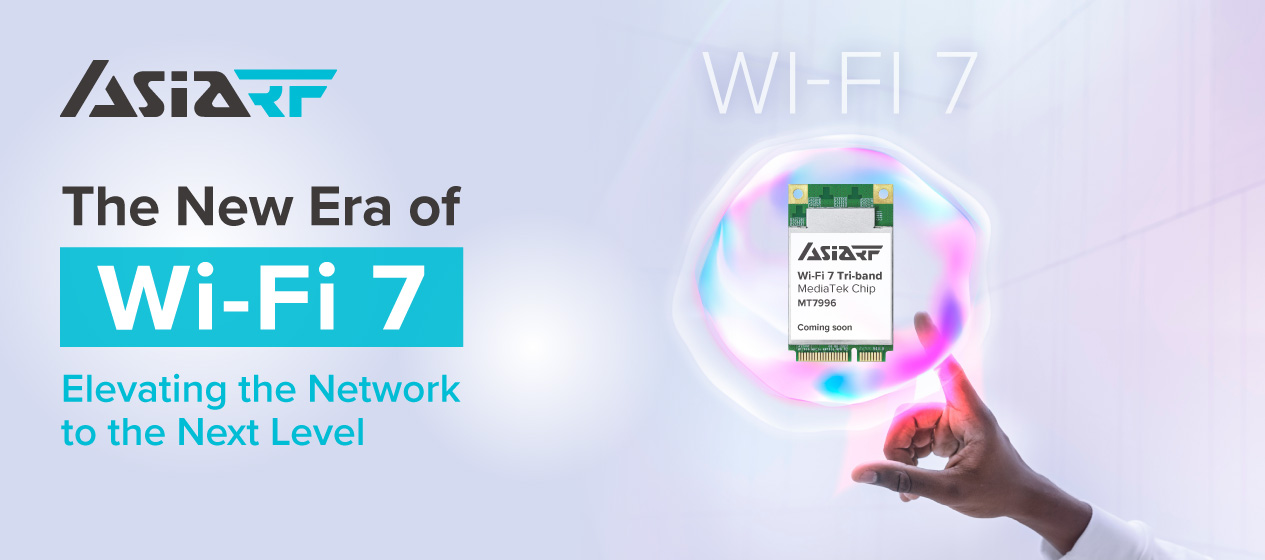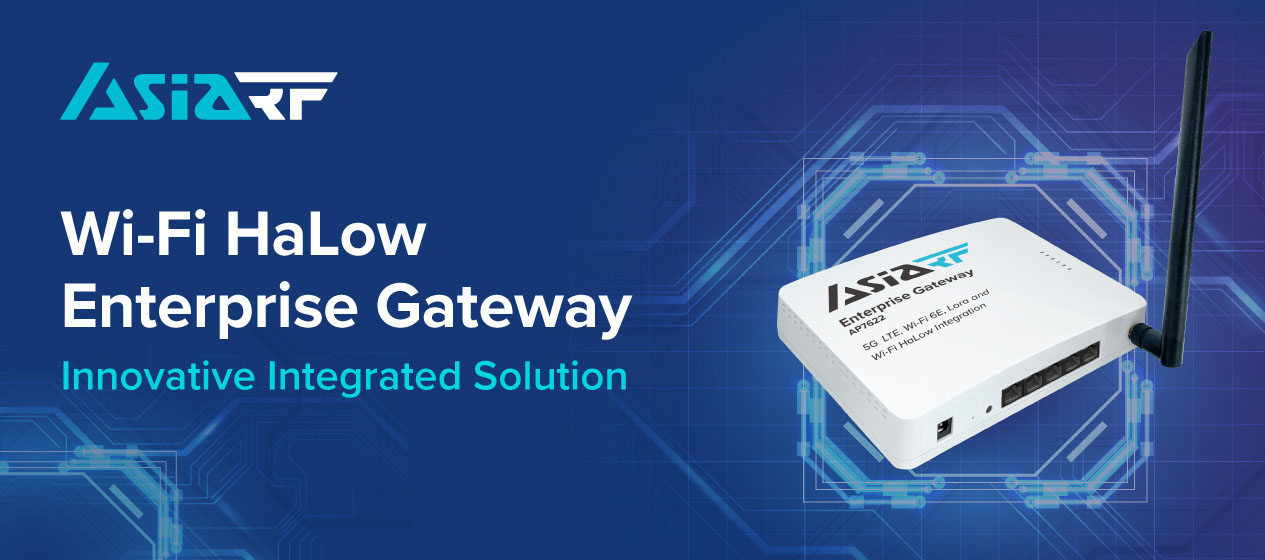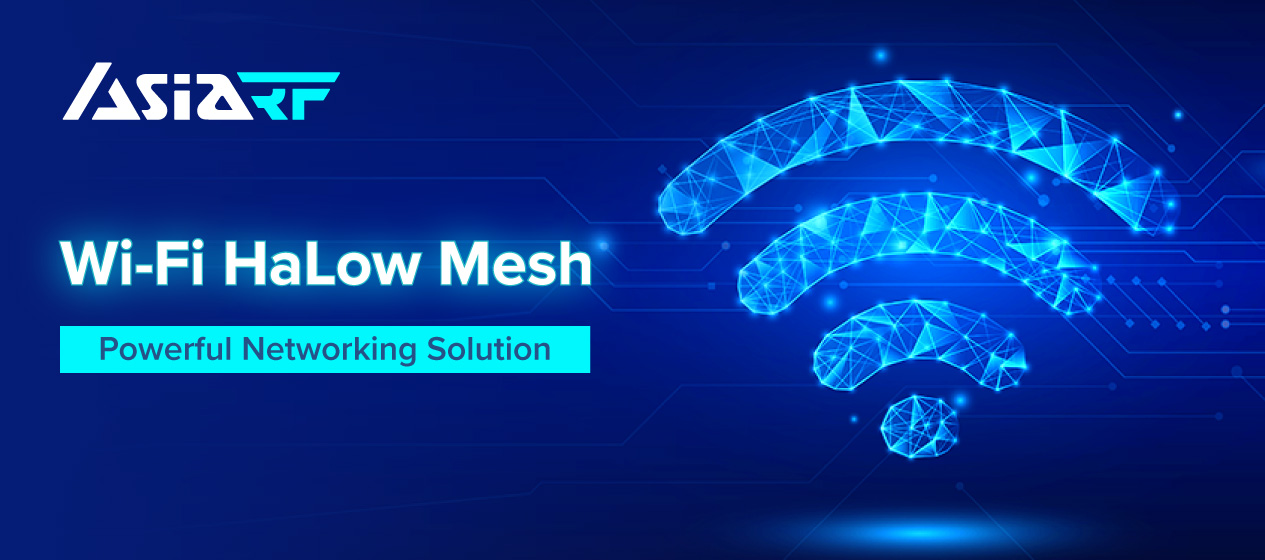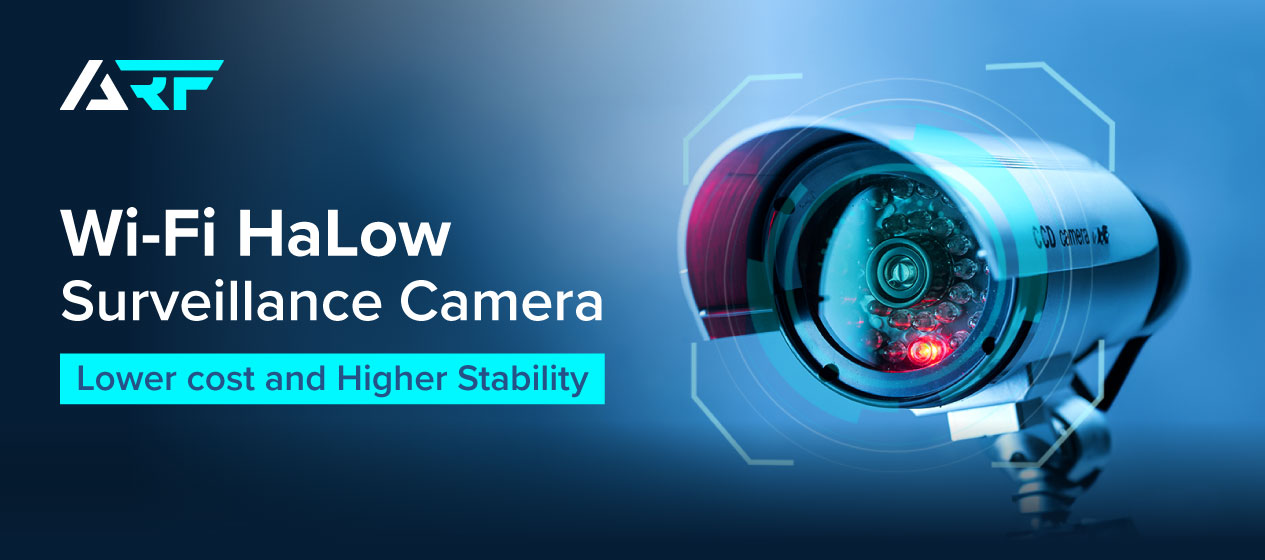Subscribe to receive
the up-to-date news and
stay informed of the latest developments.

A sprawling winery estate, spanning vineyards, winemaking facilities, and cellars, requires remote monitoring and control of environmental conditions such as temperature and humidity. Therefore, integrating various sensors and monitoring systems into the technical equipment is crucial for enhancing efficiency and ensuring quality. Especially in wine cellars, filled with racks and barrels, achieving smooth internet connectivity poses a challenge. Wi-Fi HaLow technology, with its long-range, high penetration, and low power consumption, is the ideal solution. Application of Wi-Fi HaLow technology Wi-Fi...

In the ever-evolving landscape of wireless communication, AsiaRF has once again asserted its commitment to innovation by diving headfirst into the realm of Wi-Fi 7 technology. As the demand for faster and more reliable connectivity continues to surge, AsiaRF’s strategic move positions the company at the forefront of the next generation of wireless networking. AsiaRF’s Wi-Fi 7 technology, utilizing MediaTek MT7996, leverages MediaTek’s distinctive 4T5R technology platform with advanced receiver diversity techniques and MRC (Multiple Receive Chains). This boosts throughput...

AsiaRF, leveraging cutting-edge technology, has introduced the world’s first Wi-Fi HaLow Gateway with Dual-band support. This innovative device seamlessly integrates Sub-GHz Wi-Fi HaLow and conventional 2.4GHz Wi-Fi, catering to both long and short-distance connections. Engineered to deliver optimal performance, especially in diverse industrial environments, it provides unparalleled flexibility and efficiency. Key benefits include: Dual-band applications implemented in logistics scenarios: Applying AsiaRF’s ARFHL-AP in Sub-1GHz for long-range transmission feature, enhancing network coverage, enabling the wireless sensing of goods’ status and transmission...

AsiaRF is consistently dedicated to advancing wireless network technology. In a recent pioneering move, we have introduced the Wi-Fi HaLow Enterprise Gateway AP7622, seamlessly integrating Wi-Fi HaLow, 5G, LTE, Wi-Fi 6E, and LoRa technologies into a single device. This innovation, recognized as the highest-level Wi-Fi HaLow gateway, results in a versatile and powerful communication hub, showcasing our commitment to staying at the forefront of industry advancements. The Wi-Fi HaLow Enterprise Gateway offers a potent and adaptable solution designed to meet...
For cargo logistics, the primary mission is to ensure the intact delivery of goods to the correct destination. Therefore, the real-time monitoring and tracking of cargo during transportation to avoid any potential errors are crucial aspects. In this process, incorporating a Wi-Fi HaLow connectivity solution can significantly enhance the overall efficiency of data transmission. The following is our proposed solution that integrates AsiaRF’s Wi-Fi HaLow MM610X module with container logistics: Key benefits of Wi-Fi HaLow In conclusion, the integration of...

AI robots are rapidly emerging in the fast-paced world of technology, with “warehouse robots” being a prominent trend. Evolving alongside AI technology, warehouse robots can perform automated warehouse management, cargo handling, and even climbing shelves for inventory. Therefore, in warehouse environments, robots require a real-time and stable communication system to execute tasks. Wi-Fi HaLow is well-suited to meet these needs. Compared to conventional Wi-Fi, Wi-Fi HaLow boasts a larger coverage range and higher penetration capabilities. Consequently, in expansive and structurally...

The ongoing evolution of wireless technology has revolutionized various industries, including logistics management. Utilizing wireless barcode scanners for real-time monitoring and inventory management, or employing technologies like AGVs and AMRs for cargo handling, all depend on reliable wireless network equipment. This ensures the seamless and stable operation of the entire logistics system.Therefore, AsiaRF conducted a “health check” on the wireless network equipment for one of the RentraPartner Logistics Co., Ltd. and proposed a more comprehensive and robust wireless network solution....

With the realization of Industry 4.0, more and more smart factories and production lines incorporating IIoT (Industrial Internet of Things) technology are emerging. IIoT relies on robust wireless networking devices to achieve intelligent production management. AsiaRF, with its goal to support IIoT, is actively developing a cutting-edge networking solution called “Wi-Fi HaLow Mesh”. This innovation aims to provide a more efficient and stable wireless network system, leading the way to a new future in network communications. AsiaRF’s Wi-Fi HaLow Mesh...

“Ocean Forecasting” aims to provide accurate weather data. Even in areas with weak network signals, users can receive real-time information on wind speed, weather, and more. This allows for informed decisions, ensuring safer and more enjoyable maritime activities. AsiaRF has introduced the Wi-Fi HaLow IoT Gateway ARFHL-AP, embedded with the industry-leading Morse Micro MM610X Wi-Fi HaLow chip, offering users the following features for their ocean forecasting experience: Wi-Fi HaLow is an open standard wireless technology operating in the sub-GHz frequency...

In the installation of surveillance cameras, one can typically choose between wired and wireless Wi-Fi connectivity, each with its own advantages and drawbacks. Wired surveillance cameras offer high network stability but come with long installation times, higher consumable costs, and expensive installation expenses. On the other hand, conventional Wi-Fi cameras offer easy installation and are plug-and-play, but their connection stability is often affected by the environment, and they have limited signal range when placed at a distance from the network...

